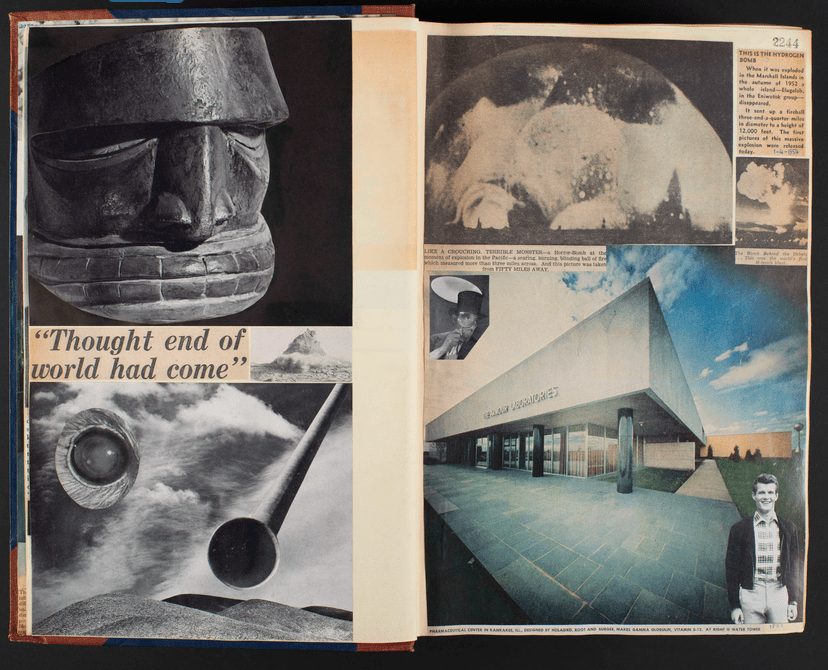The images that follow are taken from the University of Glasgow’s ‘Digistising the Edwin Morgan Scrapbooks’ project.
from Edwin Morgan’s scrapbook Number 12 (1954 – 1960)
Perhaps the most visually intense scrapbooks that will be included in this blog are those by Edwin Morgan. There is a certain irony in this, when Morgan (1920 – 2010) was first and foremost a poet and translator. The scrapbooks’ dense visuality seems to emerge as the combination of several factors: first, the quality of the component parts, which are often busy with imagery; second, the determination to make the most of any given ground, so that there are few dead spots between the pasted elements; and third, the use of layering in a way that realises the second principle for any underlying image.
from Edwin Morgan’s scrapbook Number 12 (1954 – 1960)
from Edwin Morgan’s scrapbook Number 12 (1954 – 1960)
from Edwin Morgan’s scrapbook Number 12 (1954 – 1960)
In the images that follow – which are taken from the University of Glasgow’s site (details as above) – the blue shapes denote redactions of material which might be problematic to reproduce for copyright reasons. While copyright applies to the reproduction of a scrapbook as a design (within the usual application of copyright law), it also applies to components where authored by others. For this reason, the process of securing clearance for the reproduction of scrapbooks can be very involved. The University of Glasgow project offers sample spreads taken from Edwin Morgan’s 12th scrapbook with an interactive ‘risk filter’ which shows, in graphic form, for different levels of ‘risk appetite’ what might be problematic in reproducing any given component(s). The first image shows the ‘high risk’ outcome, the second, for ‘low’.
from Edwin Morgan’s scrapbook Number 12 (1954 – 1960)
from Edwin Morgan’s scrapbook Number 12 (1954 – 1960)







